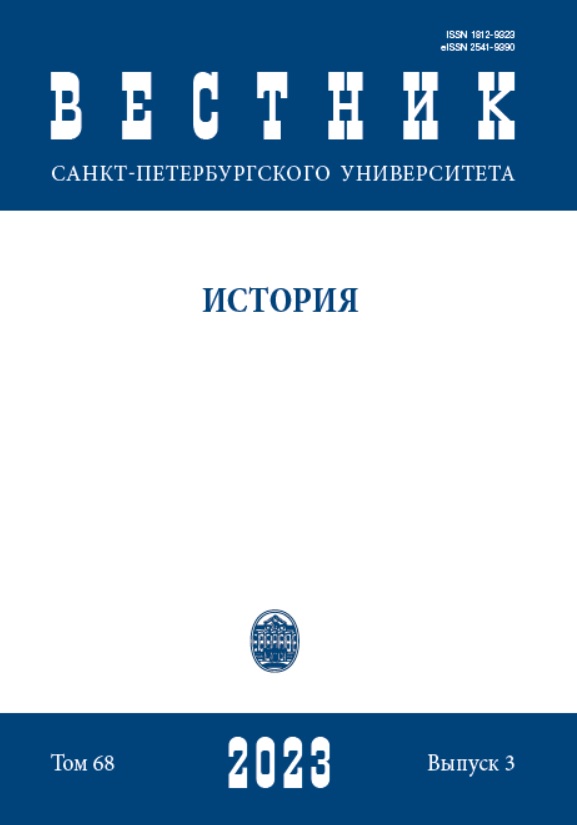Lycaonia: from ancient geography to Khorenatsi and Shirakatsi
DOI:
https://doi.org/10.21638/spbu02.2023.308Abstract
For the first time in historiography, we have made an attempt to consider the historical geography of the region of Lycaonia, which was located on the territory of the modern peninsula of Asia Minor. This area can be called the «Forgotten Territory», since so far not a single scientist has turned to the study of this important part of Asia Minor (except for articles in encyclopedias). Despite the fact that Lycaonia never had its own statehood, from ancient times it played an important role in the relations of the great powers of the ancient world. Comparing the data of «Ancient Armenian Geography («Ashkharatsuyts»/«Աշխարհացույց»), first of all, with the data of Strabo and Ptolemy, we found out how the boundaries of this region have changed in relation to neighboring states. Consideration of the issue of the territory of Lycaonia is possible on the basis of identifying and studying the orography and hydrography of this region. At the same time, «Ashkharatsuyts» Lycaonia should be compared with the description of this country by Strabo and Ptolemy, and also, in part, with the descriptions of Pliny and other ancient authors (in particular, Herodotus and Xenophon). We analytically examined the issues of urbanization, about which the historian-geographer Claudius Ptolemy presented detailed information. The study of this text requires a hermeneutic approach. It is necessary to analyze literally every word of this message in order to obtain the desired result, which we tried to do in our study within the framework of this article.
Keywords:
Lycaonia, Ancient Armenian geography (Ashkharatsuyts), Movses Khorenatsi, Ananias Shirakatsi, Strabo, Ptolemy, historical geography
Downloads
References
Downloads
Published
How to Cite
Issue
Section
License
Articles of "Vestnik of Saint Petersburg University. History" are open access distributed under the terms of the License Agreement with Saint Petersburg State University, which permits to the authors unrestricted distribution and self-archiving free of charge.





